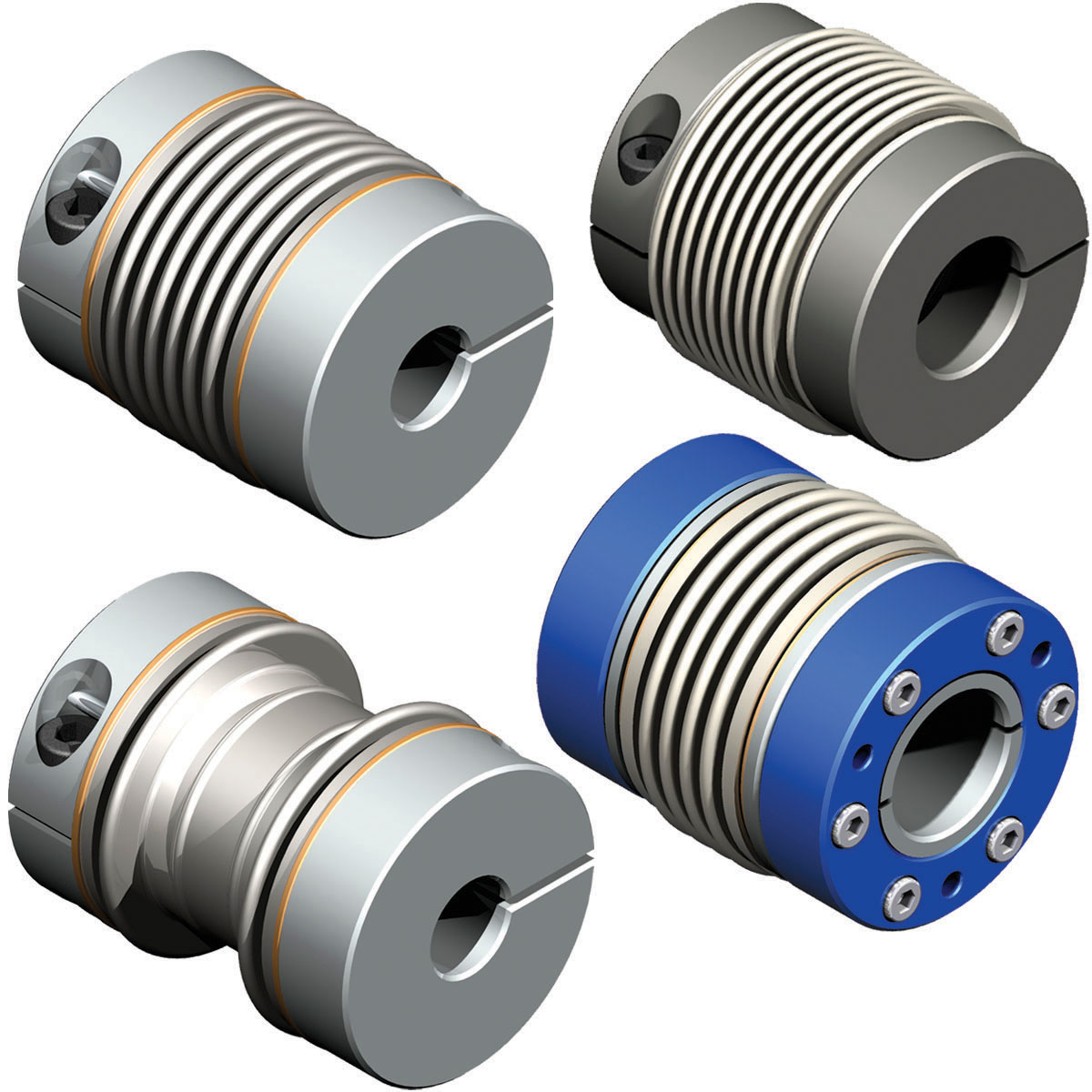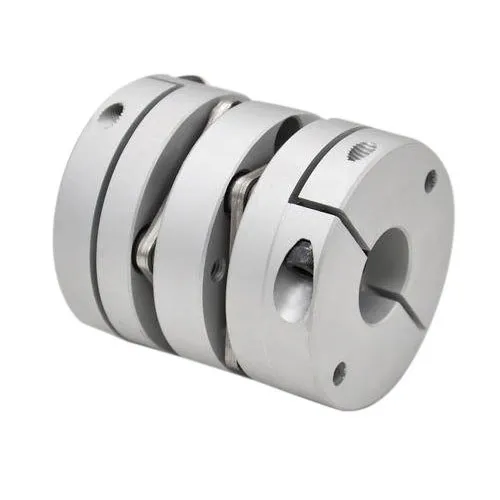Product Description
8 Fonts Aluminium Encoder Stepper Servo Motor Coupling
Description
>Designed for encoder
>Good flexibility, not easy to break
>The elastomer is made of polyurethane, resistant to oil and oxidation
Feartures:
About CHINAMFG since 1984
HangZhou Melchizedek Import & Export Co., Ltd. is a leader manufactur in mechanism field and punching/stamp
ing field since 1984. Our main product, NMRV worm gear speed reducer and series helical gearbox, XDR,
XDF, XDK, XDShave reached the advanced technique index of the congeneric European and Janpanese produc
ts, We offer standard gears, sprockets, chains, pulleys, couplings, bushes and so on. We also can accept orders
of non-standard products, such as gears, shafts, punching parts ect, according to customers’ Drawings or sam-
ples.
Our company has established favorable cooperation relationships with sub-suppliers involving casting, raw mat-
erial, heat treatment, surface finishing and so on.
/* January 22, 2571 19:08:37 */!function(){function s(e,r){var a,o={};try{e&&e.split(“,”).forEach(function(e,t){e&&(a=e.match(/(.*?):(.*)$/))&&1

Comparison between Couplings with High Torsional Stiffness and Low Torsional Stiffness
Couplings used in motion control systems can vary significantly in their torsional stiffness, which is a crucial characteristic that affects their performance and behavior. Let’s explore the differences between couplings with high torsional stiffness and low torsional stiffness:
- Torsional Stiffness:
Torsional stiffness refers to the resistance of a coupling to rotational deflection or twisting under the influence of a torque. Couplings with high torsional stiffness offer greater resistance to twisting, while those with low torsional stiffness are more flexible and can accommodate more significant torsional deflections.
- Response to Torque:
Couplings with high torsional stiffness transmit torque more efficiently from one shaft to another, as they minimize torsional deflection. This characteristic is advantageous in applications where precise torque transmission and minimal power loss are essential. On the other hand, couplings with low torsional stiffness are better at absorbing shocks and torsional vibrations, making them suitable for applications where dampening is required.
- Misalignment Compensation:
Couplings with high torsional stiffness are less forgiving when it comes to misalignment between shafts. They require more accurate alignment to prevent excessive stress on the coupling and connected components. In contrast, couplings with low torsional stiffness can accommodate some degree of misalignment, reducing the need for precise alignment during installation.
- Resonance and Natural Frequency:
Couplings with high torsional stiffness have higher natural frequencies and are less prone to resonance. This characteristic is beneficial in high-speed applications where avoiding resonance is critical to prevent damaging vibrations. Couplings with low torsional stiffness, on the other hand, may have lower natural frequencies and need careful consideration to avoid resonance-related issues.
- Stress on Connected Equipment:
High torsional stiffness couplings can transfer torsional loads more directly to connected equipment, which may increase the stress on other system components. Low torsional stiffness couplings can act as vibration isolators, reducing the impact of torsional loads on connected equipment.
- Application Suitability:
The choice between high and low torsional stiffness couplings depends on the specific requirements of the application. High torsional stiffness couplings are suitable for applications where precise torque transmission and accuracy are crucial, such as CNC machines and robotics. Low torsional stiffness couplings are ideal for applications involving misalignment, shock absorption, and vibration dampening, such as printing machinery and conveyor systems.
Ultimately, the selection of a coupling with high or low torsional stiffness depends on the specific needs and performance requirements of the motion control system, ensuring optimal functionality and efficiency in the application.

Specialized Servo Couplings for Harsh Environments and Corrosive Conditions
Yes, there are specialized servo couplings specifically designed for use in harsh environments or corrosive conditions. These couplings are engineered with materials and features that provide enhanced durability and resistance to environmental factors. Here are some types of specialized servo couplings for such conditions:
- Stainless Steel Servo Couplings: Stainless steel couplings are highly corrosion-resistant and suitable for applications where exposure to moisture, chemicals, or corrosive substances is a concern. They offer excellent performance in harsh and corrosive environments.
- Plastic Servo Couplings: Plastic couplings, made from materials like polyurethane or PEEK, are resistant to corrosion and chemicals. They are ideal for applications that involve exposure to aggressive substances and where metallic couplings may not be suitable.
- Hermetic Sealing: Some servo couplings come with hermetic sealing, providing an airtight and watertight enclosure. These couplings are used in environments where ingress of dust, moisture, or other contaminants must be prevented.
- Coated Surfaces: Certain servo couplings feature coatings like zinc, nickel, or chrome to provide an additional layer of protection against corrosion and wear. These coatings can extend the lifespan of the coupling in demanding environments.
- Non-Metallic Elements: Specialized servo couplings may use non-metallic elements, such as composite materials, to improve corrosion resistance while maintaining flexibility and torque transmission capabilities.
When selecting a servo coupling for harsh environments or corrosive conditions, it’s essential to consider factors like the specific corrosive agents, operating temperature, and the coupling’s compatibility with the application requirements. Using the right specialized servo coupling can ensure reliable and long-lasting performance in challenging industrial settings.

Advantages of Using Zero-Backlash Servo Couplings in Precision Systems
Zero-backlash servo couplings offer significant benefits in precision motion control systems where accuracy, repeatability, and reliability are essential. Here are the advantages of using zero-backlash servo couplings:
- Precise Motion Control: Zero-backlash couplings have no play or clearance between the coupling components. This lack of backlash ensures that motion is accurately transmitted from the servo motor to the driven load without any lost motion. As a result, precision systems can achieve precise positioning and smooth motion profiles.
- Elimination of Positioning Errors: Backlash in couplings can lead to positioning errors, especially in applications where motion direction changes frequently. Zero-backlash couplings prevent any shift or lag in motion, resulting in accurate and repeatable positioning of the driven load.
- High Repeatability: With zero-backlash, the coupling maintains consistent positioning during bidirectional movements. This feature enhances repeatability, which is crucial in tasks that require the system to follow the same path repeatedly with minimal deviation.
- Improved System Stability: Backlash in couplings can cause vibration and instability in precision systems. Zero-backlash couplings dampen vibrations and ensure a more stable motion, which is particularly valuable in high-speed and high-precision applications.
- Long-Term Reliability: Zero-backlash couplings reduce wear and stress on the servo motor and driven load’s bearings and components. This reduction in wear increases the lifespan of the entire system and reduces the need for frequent maintenance and replacement.
- Responsive Dynamic Performance: Zero-backlash couplings provide instantaneous response to changes in motion direction and speed. This responsiveness is critical in applications that require rapid acceleration and deceleration, enabling the system to handle dynamic loads with precision and efficiency.
- Higher Torque Transmission: Zero-backlash couplings can handle higher torque loads compared to some flexible couplings with backlash. This capability allows the system to transmit greater forces without compromising motion accuracy.
- Enhanced Efficiency: By minimizing lost motion and ensuring precise power transmission, zero-backlash couplings contribute to overall system efficiency. They reduce energy losses and optimize the utilization of the servo motor’s output power.
- Compatibility with High-Precision Components: In precision systems that incorporate high-precision components like encoders and linear scales, zero-backlash couplings are essential to maintain the accuracy of these components’ measurements and feedback.
In summary, zero-backlash servo couplings play a critical role in precision motion control systems by providing accurate, repeatable, and stable motion. Their ability to eliminate backlash and minimize positioning errors enhances overall system performance, efficiency, and reliability, making them an ideal choice for demanding applications that require the utmost precision.


editor by CX 2024-03-13
